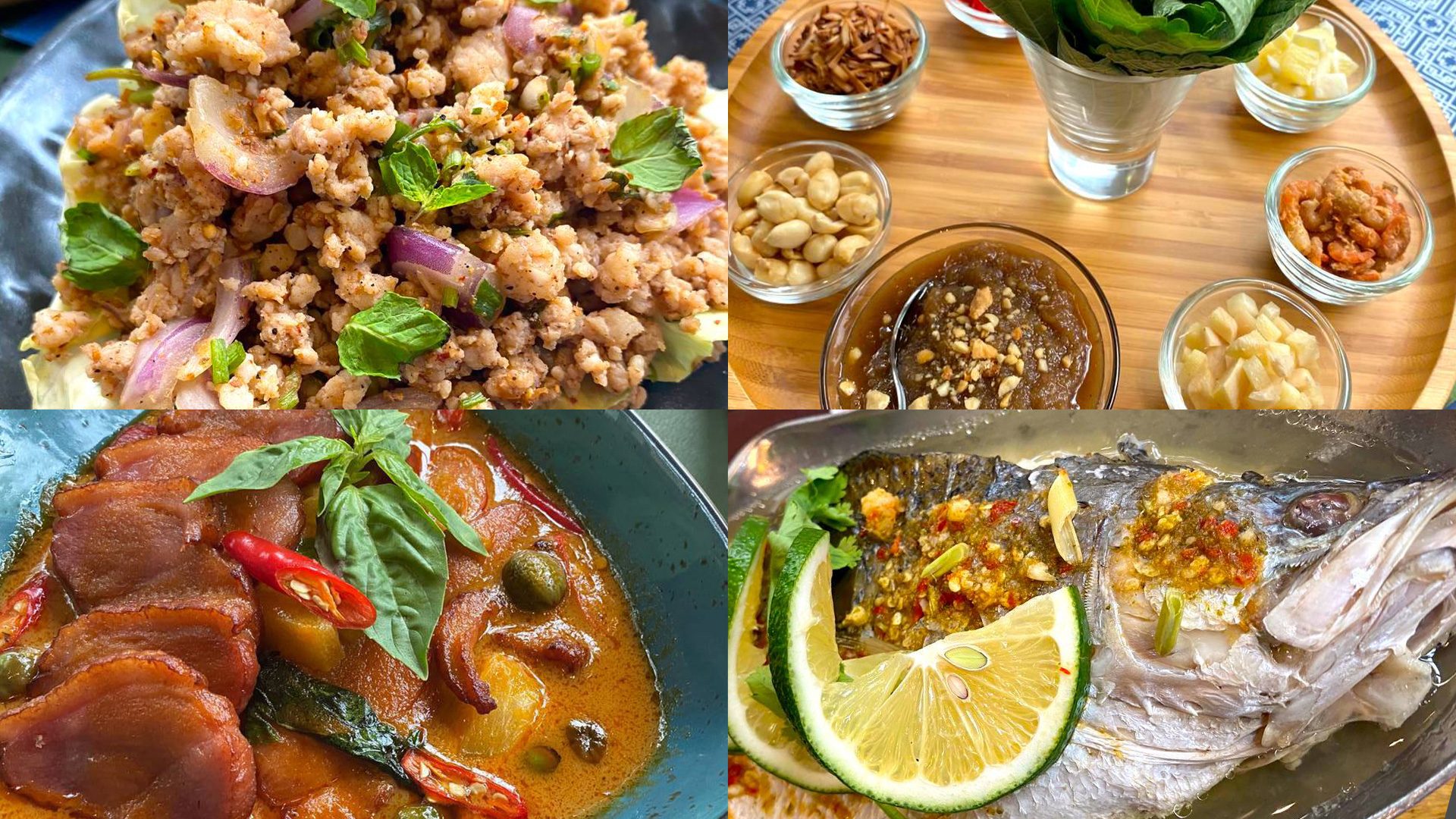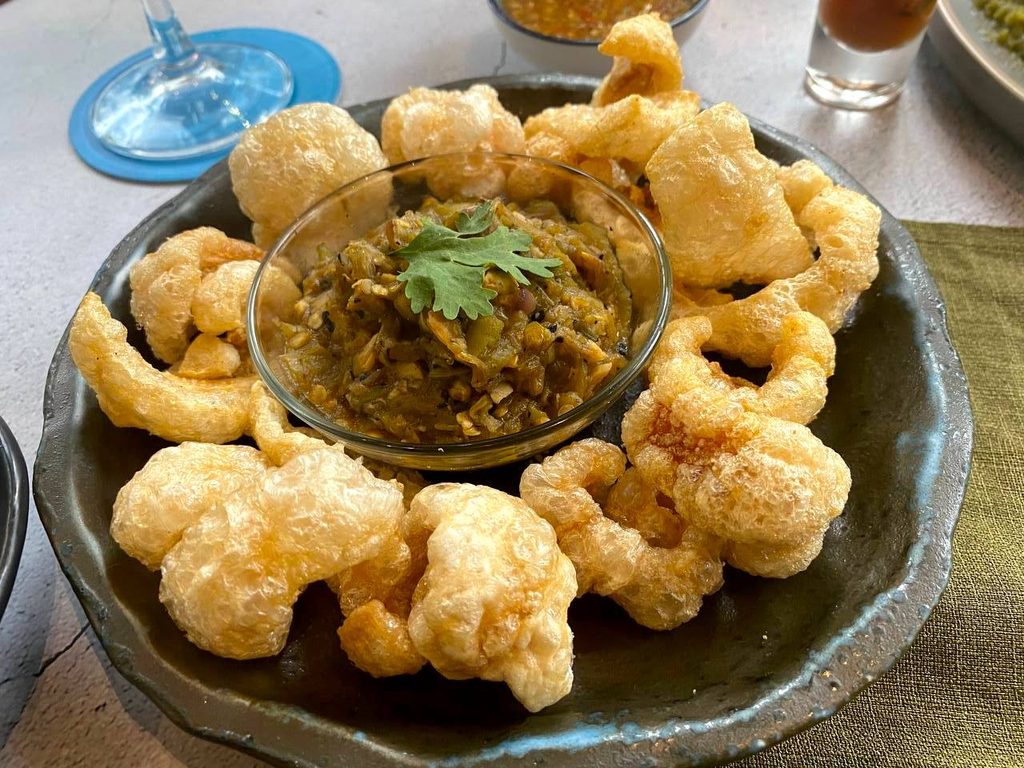SUMMARY
This is AI generated summarization, which may have errors. For context, always refer to the full article.

MANILA, Philippines – Think Thai food, and most likely pad thai, curry, and tom yum will come to mind. However, that’s not all the Southeast Asian gem gastronomically offers; Chiang Mai – the northern mountainous region of Thailand – brings to the dining table a distinct regional cuisine that tourists have been traveling to the cultural hotspot for.
Are you flying to Chiang Mai soon? Are you just curious to try out the traditional cuisine of Northern Hill tribes, and see how it differs from Thailand’s mainstream dishes?
Starting October 15, restaurant Mango Tree is serving an authentic Chiang Mai menu, inspired by a recent trip its chefs took to the original Mango Tree restaurant in Surawong, Bangkok in July.

Mango Tree’s chefs immersed themselves with the local tribes of Northern Thailand, learning about their culture and humble cuisine. The chefs were also trained by Northern Thai culinary masters like Chef Kannika Tassanaprasit (Iron Chef Thailand challenger) and Chef Phanuphon “Black” Bulsuwan.
A little history: Taking after Thailand’s tribes
The region’s major city has always been Chiang Mai, established by King Mangrai in 1297. After being independent many times, it was then conquered by the Burmese and in allegiance with Ayuthyia. After 200 years of Burmese rule, in the late 18th century, Chiang Mai came under the control of Siam.
The remote, undisturbed region was far from Bangkok; it took a month to travel to and from in the early 1900s via boat and elephant. In 1921 a rail connection was built, and in 1928, King Rama VIl was the first Siamese king to visit the distant but sprawling community. The railway helped increase Bangkok’s control over the region, enabling trade with South Thailand the use of the national currency.
Living in the region’s upland valleys are Northern Thailand Hill Tribes – these are ethnic groups of indigenous people who live in the mountains of northern Thailand, with the well-known tribes being the Akha, Lanna, Tai Yai, and Lisu people. The people of the north regions of Thailand are often referred to as “kon muang,” people of the principalities.
The rural Chiang Mai – a tourist destination growing increasingly popular – is known for its rich heritage, cultural diversity, physical isolation, historical complexity, and true-to-its-roots cuisine that highlights traditional ingredients and unique herbs and spices which sets it apart from central Thailand’s.
Its own identity
Mango Tree’s exclusive dishes feature Chiang Mai’s cuisine’s fragrant flavors and culinary traditions, inspired by Lisu cuisine, which is influenced by their agricultural lifestyle featuring staple foods like rice, corn, millet, game meat, and fish. The region’s chilly climate also has an impactful effect on their mains – most dishes are hearty and filling, using native produce, herbs, and rendered pork fat as the traditional frying medium, which lends a rich, silken quality to the food.

The food of the North is not as spicy or bursting with heat, compared to other regions, and here, sticky rice is the preferred option. Coconut is rarely used in the north, as the region has “too temperate a climate for the palms to grow.” Water or stock are used to add moisture, and vegetable oil is used for cooking and frying.
The north’s seasonings are not as powerful and intense as other regions; they rely on fragrant herbs, spices, and fresh produce to create its two major flavor profiles of slightly spicy and salty. Its heat comes from native chillies, dried and powdered galangal, and other rhizomes and spices. White, black, and long peppers and the dried berries of prickly ash (macquem) also bring a gentle heat and a citrusy aroma. The dishes’ umami comes from light soy sauce and plain salt.
They also utilize fermented foods to add depth.
“Lisu food reflects a strong connection to the environment and an emphasis on simplicity and sustainability. While modern influences have emerged, efforts are made to preserve their traditional culinary heritage,” Mango Tree said.
Must-thai dishes

During Mango Tree’s tasting event, we were invited to try Thailand’s famous street food snacks of deep-fried crickets and silkworms upon arrival (unfortunately, these won’t be served at the restaurant).

Brave as I could be, I munched on each one, and they didn’t bug me at all! After the initial crunch, I found the silkworm to have a liver pâté-like texture and meaty taste. The crickets were lighter, crispier, and saltier.

For starters, we tried Chiang Mai’s Miang Kham, a traditional one-bite snack that translates to “one bite wrap.” Similar to Korean barbecue, it involves an array of Thai ingredients to stuff inside an aromatic perilla (sesame) leaf.

Served in a circular tray, you have galangal, red onion, lemon, chili, dried shrimp, coconut flakes, peanuts, and a sweet-savory miang kham sauce that ties the various flavors together. It’s not meant to be filling, so I appreciated it as a light snack with refreshing flavors. Here you get spicy, salty, sweet, and sour all in one bite.
We also tried Nam Prik Noom, a dip consisting of northern Thailand roasted green chillies, pounded with herbs until thick and mushy. This is typically served with boiled vegetables or crunchy pork cracklings (couldn’t say no to chicharon)!

This is not for those sensitive to spicy (like me); all I did was lightly dab the crackling into the dip, and that was a spice bomb already for me. The fatty, salty crackling did help temper the spice a bit.
My favorite dish would have to be the Chiang Mai Laarb Khua, a Northern minced pork salad with Makwan pepper.

The spicy minced pork was juicy and moist, and abundant in zingy Asian flavors, stir-fried with lime juice, fish sauce, aromatic herbs, and makwan peppers, which offered its own signature spice unlike the usual chili pepper. All wrapped in a crunchy cabbage leaf, this was satisfying and hearty. In terms of spice, it was more of a nice hum than a shout, which I liked. I also enjoyed the slight kick the raw red onions gave to temper the richness of the pork.

We also tried the Sai Oua, a traditional Chiang Mai sausage that’s grilled and made with minced pork, herbs, and spices. A standard food of the northern region, it is typically made with kaeng khua red curry paste and eaten with sticky rice. Although not lacking in tingly spice and aromatic herbs like lemongrass and ginger, the sausage itself was a bit dry for my liking, as well as the turmeric sticky rice it’s served with.

Also on the menu is Hill Tribe Aeb Pla, spicy fish in banana leaf. Originating from the hill tribes around Chiang Mai, this filleted white fish is marinated in a slightly spicy and tart Northern herb mixture, and then wrapped and grilled in banana leaf. Mango Tree Philippines uses maya-maya for this, which was soft, oily, flaky, and slightly smoky. This was good with steamed rice.

It’s not Southeast Asian fare without curry, so we tried the Kaeng Hang Le, a Chiang Mai signature red curry. This one is mostly savory and slightly sweet, with a more watery-oily consistency compared to the more viscous curries around. It’s made with soft pork belly, fermented bamboo shoots, and herbs and spices. Not much spiciness here.

Lastly, we had the Khao Soi, a traditional Northern curry noodle soup topped with crispy egg noodles, chicken, lime wedges, and pickled vegetables. Similar to laksa, the coconut milk adds a delicate creaminess to the fragrant, comforting, and mildly spicy soup. However, the amount of noodles overpowered the amount of broth, so it felt like I was eating a noodle dish instead. There are different iterations of this dish, depending on the region.
Chiang Mai’s cuisine had some flavor notes similar to regional Philippine cuisine, with its abundant use of lemongrass, ginger, and chili. Overall, it’s less spicy and less sweet than the central region’s cuisine; salty ingredients and aromatic herbs and unique spices are king here.
Customers can try Mango Tree’s Chiang Mai selection in all Mango Tree and Mango Tree Cafe stores in the Philippines. A Thailand-born brand introduced to the country in 2010, it now has nine branches in Metro Manila: BGC, City of Dreams, Trinoma, Greenbelt, Ayala Malls Manila Bay, SM Baguio, Greenhills, SM Megamall and SM North EDSA.
Mango Tree, which first opened in Bangkok in 1994, can also be found in Thailand, Japan, Vietnam, Hong Kong, Singapore, China, United Arab Emirates, and United Kingdom. – Rappler.com
Add a comment
How does this make you feel?




There are no comments yet. Add your comment to start the conversation.